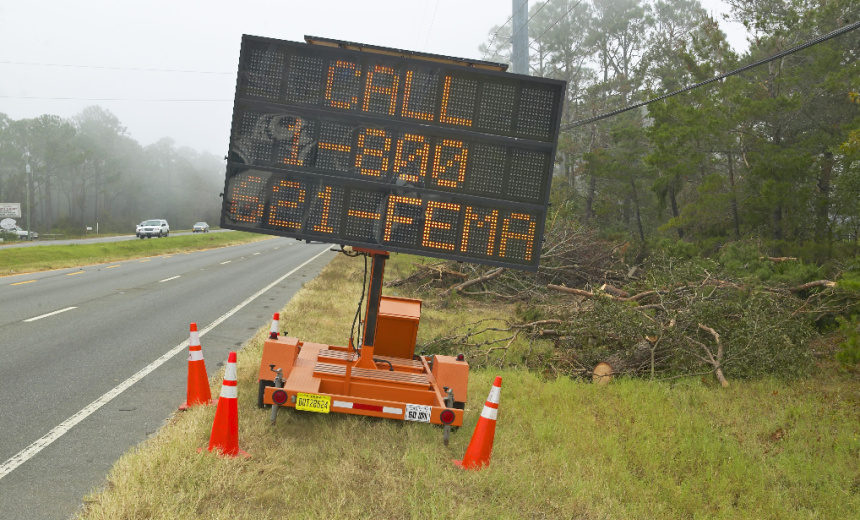FEMA CIO: Cyber Advisers Provide Critical Security Guidance Amid Recovery Efforts

The U.S. Federal Emergency Management Agency isn’t just about emergency water and shelters anymore. The agency, synonymous with natural disaster response, now deploys cyber advisers in disaster zones to “rapidly and securely” build information technology and operational technology infrastructure amid recovery efforts, FEMA CIO Charles Armstrong said Thursday.
See Also: How to Unlock the Power of Zero Trust Network Access Through a Life Cycle Approach
Critical infrastructure including communication networks, power grids and healthcare systems can be especially vulnerable in the wake of a natural disaster or emergency, when networks are often disrupted and resources are stretched thin. FEMA launched its cyber advisory program in 2023, hiring emergency cyber personnel across the country and issuing its first-ever cyber incident planning guidance for emergency managers that same year, with the Cybersecurity and Infrastructure Security Agency.
Recent natural disasters throughout the U.S. have exposed just how vulnerable industrial control systems can be to cyberattacks amid a crisis scenario. Hurricane Ida highlighted the need for enhanced cybersecurity and electric grid resilience, according to a government watchdog report that said the systems that control electric power generation and distribution “are increasingly connected – creating opportunities for attackers.”
FEMA has deployed cyber advisers to every federally declared disaster zone in 2024, according to Armstrong, and they have served in either a physical or remote capacity to assess cyber risks, assist in the restoration of critical systems and provide on-the-ground support to ensure the secure rebuilding of IT and OT infrastructure. The agency spearheaded a first-of-its-kind $1 billion cybersecurity grant program for state, local and territorial governments in September 2022, aiming to support projects that address cyber risks to government information systems across the country.
“We’re constantly standing up new field offices to support a disaster, and they’re typically up for at least a year,” Armstrong told the Billington CyberSecurity Summit in Washington, D.C., later adding: “Standing up a new disaster office opens up opportunities for hackers.”
FEMA cyber advisers don’t just secure disaster sites and infrastructure, Armstrong said. They also work directly with community leaders to identify vulnerabilities exposed by the crisis and offer strategies to rebuild stronger, more resilient networks for future disasters. Advisers from the agency have worked with officials in Puerto Rico to build a more resilient energy grid, said Peter Green, deputy laboratory director of the Department of Energy National Renewable Energy Laboratory, who also spoke at the Billington CyberSecurity Summit.
“We worked with FEMA on recovery but more importantly, we’re now designing what a future grid looks like that’s more resilient,” Green said.
